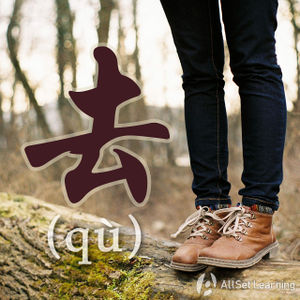Difference between revisions of "Result complement "-xiaqu""
(→Books) |
|||
| Line 60: | Line 60: | ||
{{Similar|Further Uses of Resultative Complement "qilai"}} | {{Similar|Further Uses of Resultative Complement "qilai"}} | ||
{{Used for|Expressing result}} | {{Used for|Expressing result}} | ||
| + | {{Used for|Describing actions}} | ||
{{Structure|Complements}} | {{Structure|Complements}} | ||
{{Subprop|Result complement}} | {{Subprop|Result complement}} | ||
Revision as of 03:33, 12 July 2013
-
Level
-
Similar to
-
Used for
-
Keywords
下去 is one of the most often heard result complements. Master how to use it with this article!
Structure
下去 can be used as a result complement to talk about things continuing or carrying on. Think of it as a figurative way of "keeping the ball rolling" (downhill).
It can be used in a positive way as well as in a negative way.
Subject + Verb + 下去
Subject + Verb + 不 + 下去
Some examples:
- 不 能 一直 这样 做 下去。You can't keep doing it like this.
- 这 个 菜 很 难吃 - 我 吃 不 下去。This food is disgusting. I can't keep eating it.
- 我 走 不 下去了 - 把 我 留下 吧!I can't keep walking. Leave me behind!
See also
- Potential complement "bu xia"
- Result complement "-qilai" (起来)
- Resultative Complement "chu(lai)"(出来)
- Direction complement
Sources and further reading
Books
- New Practical Chinese Reader 3 (新实用汉语课本3) (pp. 184) →buy
- Integrated Chinese: Level 1, Part 2 (3rd ed) (pp. 232-3) →buy
- Boya Chinese Lower Intermediate 2 (博雅汉语准中级加速篇) (pp. 137) →buy
- New Practical Chinese Reader 3 (新实用汉语课本3) (pp. 184) →buy
- 40 Lessons for Basic Chinese Course (基础汉语40课下册) (p. 429)→buy



